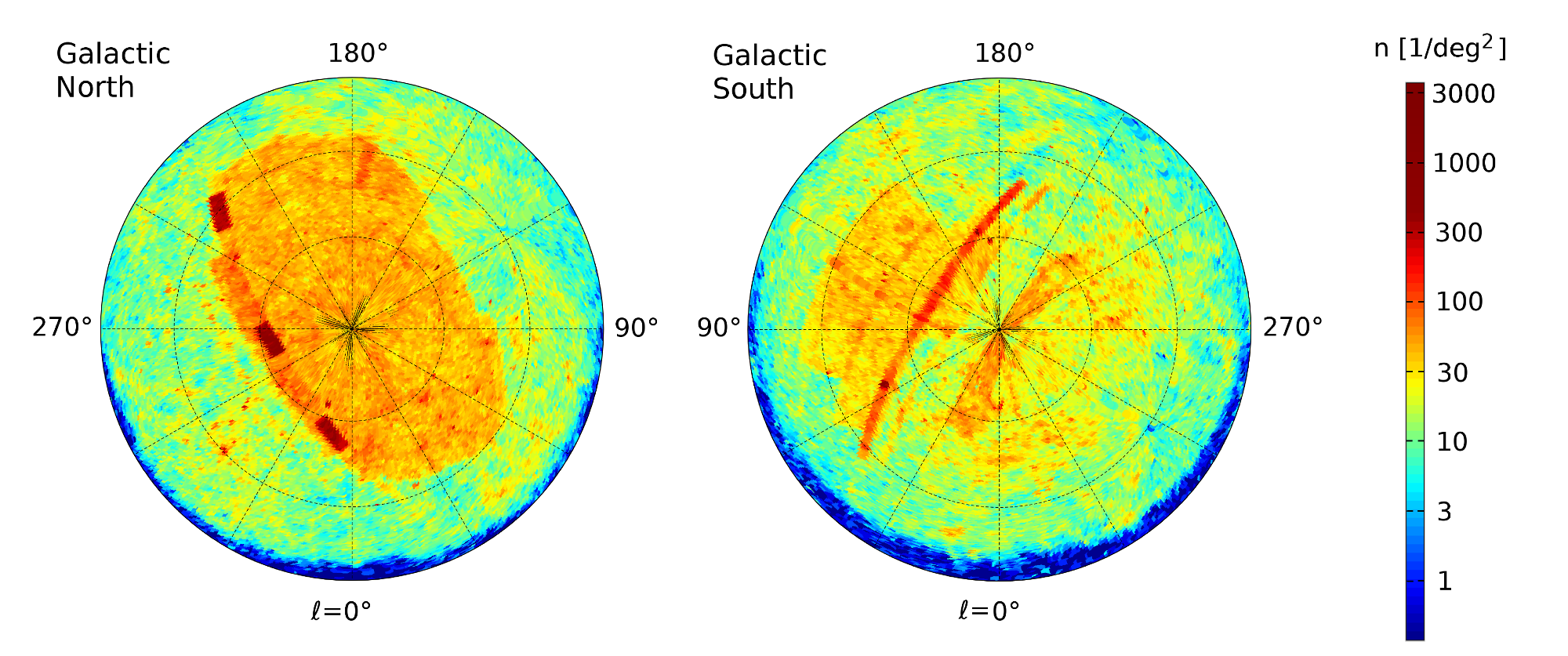

Galaxy List for the Advanced Detector Era (GLADE)
Gravitational wave (GW) observatories, such as LIGO can not exactly pinpoint the location of the observed GW’s source, so in order to detect any other type of signal (such as light) from the same source an extensive search has to be conducted by regular telescopes. Since the events generating GWs happen in galaxies, we can make this search much faster and easier if we provide a list of possible galaxies, where the event might have happened.
Motivated by this we have created the largest publicly available full-sky catalog of galaxies, named Galaxy List for the Advanced Detector Era, or GLADE, which contains more than 3 million galaxies from our cosmic neighborhood. This is two orders of magnitude more, than the number of galaxies in the catalog previously used by astronomers for the same purpose. I have given multiple presentations in various international scientific conferences about the new methods we have pioneered for galaxy catalog compilation as well as about the final properties of our database.
The astronomer partners of the LIGO-Virgo Collaboration began using GLADE at 2017, and it had a crucial role in the famous discovery of the GW170817 gravitational-wave signal. This one was the first GW signal observed from the coalescence of two neutron stars, and so far the only one where an electromagnetic counterpart was found. After the GW detection we have promptly sent the possible list of host galaxies based on GLADE to 70 earth- and space based observatories, who have found the source in a couple of hours. Most of the independent discoverers used our catalog for this historical observation.
